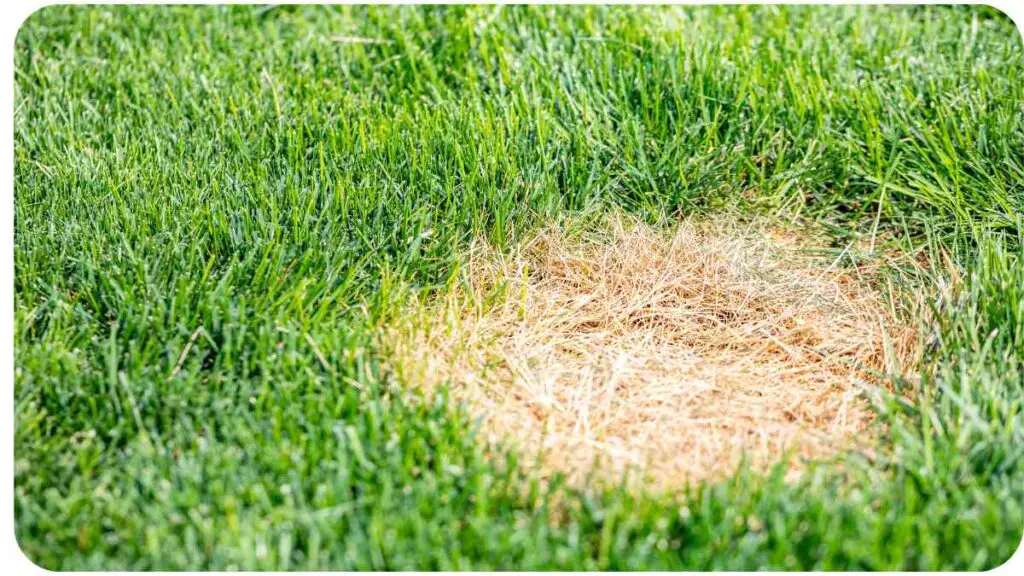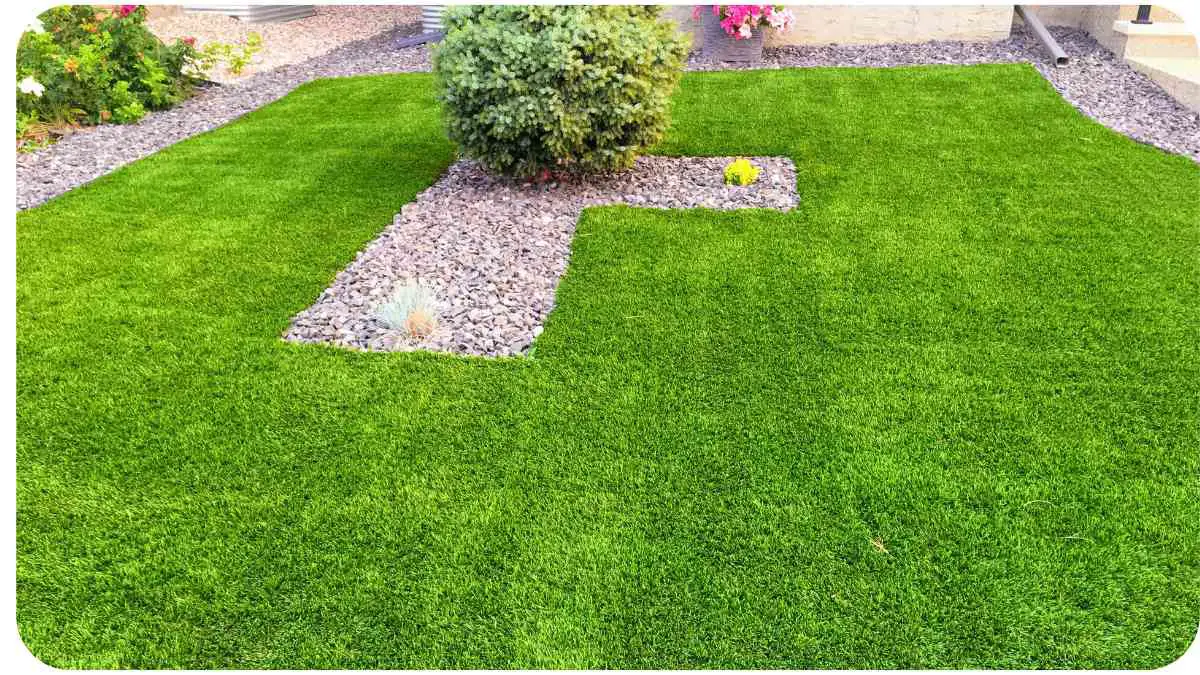Achieving a lush, green lawn that looks like it’s straight out of a magazine isn’t just a dream. With the right knowledge and a little elbow grease, you can turn your uneven, patchy lawn into a beautiful oasis. In this comprehensive guide, we’ll delve into the causes behind uneven lawn growth and provide practical solutions to help you transform your lawn into a masterpiece.
Uneven lawn growth can be a frustrating problem, but it’s not insurmountable. Whether you’re a seasoned lawn enthusiast or a newbie, this article will equip you with the expertise and tips you need to tackle this issue head-on. Let’s dive into the world of lawn care and discover how to get that perfectly manicured lawn you’ve always wanted.
| Takeaway |
| Troubleshooting uneven lawn growth requires addressing common issues like inadequate watering, soil compaction, and mowing practices. |
| Proper lawn care techniques, including watering, mowing, fertilization, and pest management, are essential for achieving a lush and even lawn. |
| Seasonal adjustments to your lawn care routine are key to maintaining a healthy lawn throughout the year. |
| Trustworthy information from reputable sources and expert advice can guide you in resolving lawn problems effectively. |
| Understanding the specific needs of your lawn and adapting solutions accordingly is crucial for success in lawn care. |
2. Common Causes of Uneven Lawn Growth
2.1 Inadequate Watering
One of the primary culprits behind uneven lawn growth is inadequate watering. Without the right amount of water, your grass can’t thrive. But how do you know if you’re watering your lawn correctly? Let’s discuss this in detail:
Maintaining a beautiful lawn year-round is crucial for a healthy lawn that enhances your outdoor space. Regular care, mowing, and watering are key factors in achieving this goal.
Table 1: Signs of Inadequate Watering
| Symptom | Description |
| Brown or yellow patches | Indicates dry, thirsty grass |
| Soil feels dry | Soil should be consistently moist |
| Footprints remain | Grass doesn’t bounce back after stepping on it |
| Slow growth | Grass growth is stunted or non-existent |
| Shallow root system | Roots don’t penetrate deeply into the soil |
2.2 Soil Compaction
When your soil becomes compacted, it restricts root growth and inhibits water absorption. This can lead to uneven lawn growth. Let’s explore the signs of soil compaction:
Table 2: Signs of Soil Compaction
| Symptom | Description |
| Difficulty inserting a screwdriver | Soil is too hard |
| Puddling after rain | Water doesn’t penetrate the soil effectively |
| Grass feels spongy | Roots struggle to grow through compacted soil |
| Excessive thatch buildup | Thatch layer becomes thicker due to poor water movement |
| Increased weeds | Weeds thrive in compacted soil conditions |
2.3 Incorrect Mowing Practices
Mowing your lawn might seem straightforward, but if done improperly, it can harm your grass. Here’s what to watch out for:
In the Ultimate Guide to Lawn Maintenance, you’ll discover comprehensive insights on lawn care techniques, including fertilization, aeration, and pest control. Ensure your lawn remains lush and vibrant.
Table 3: Signs of Incorrect Mowing Practices
| Symptom | Description |
| Scalping | Cutting grass too short, exposing soil |
| Dull mower blades | Tears grass rather than cutting it cleanly |
| Mowing too frequently | Stressing grass by cutting too often |
| Mowing when wet | Compacts soil and damages grass |
| Ignoring grass height | Cutting grass below its recommended height |
2.4 Fertilization Issues
Proper fertilization is essential for healthy grass growth. Without the right nutrients, your lawn can suffer. Here are some signs of fertilization issues:
Table 4: Signs of Fertilization Issues
| Symptom | Description |
| Yellowing or pale grass | Indicates nutrient deficiency |
| Rapid weed growth | Weeds outcompete weak grass due to lack of nutrients |
| Patchy growth | Uneven distribution of nutrients in the soil |
| Excessive thatch buildup | Nutrient imbalance can lead to thatch accumulation |
| Soil testing reveals deficiencies | Scientific testing can pinpoint nutrient issues |
2.5 Pest and Disease Infestations
Pests and diseases can wreak havoc on your lawn, causing uneven growth and unsightly patches. Keep an eye out for these signs:
Looking for expert advice on lawn care? Explore these surprising lawn care tips to address common issues and elevate your lawn care game. Simple adjustments can make a big difference.
Table 5: Signs of Pest and Disease Infestations
| Symptom | Description |
| Brown or dead patches | Indicates pest or disease damage |
| Holes in leaves | Evidence of insect activity |
| White, powdery substance | Indicates fungal growth |
| Unusual discoloration | Changes in grass color may signify disease |
| Increased weed growth | Weeds thrive in weakened grass |
3. Assessing Your Lawn’s Condition

Before you can address uneven lawn growth, it’s crucial to assess the condition of your lawn. Start by walking through your yard and taking note of any problem areas. Use the tables above to help identify the specific issues you’re facing.
4. Solutions for Uneven Lawn Growth
Now that you’ve identified the causes of your lawn’s uneven growth, let’s explore effective solutions to get your grass back on track.
Learn the Do’s and Don’ts of Lawn Care from seasoned professionals to maintain a healthy and thriving lawn. Avoid common mistakes and create an enviable outdoor space.
4.1 Proper Watering Techniques
Table 6: Tips for Proper Watering
| Tip | Description |
| Water deeply and infrequently | Encourages deep root growth |
| Water in the morning | Reduces the risk of fungal growth |
| Use a rain gauge | Measure water applied for consistency |
| Adjust for rainfall | Don’t overwater if it has rained recently |
| Invest in a sprinkler system | Ensures even water distribution |
4.2 Dealing with Soil Compaction
Table 7: Methods to Combat Soil Compaction
| Method | Description |
| Aeration | Loosens compacted soil, allowing roots to breathe |
| Topdressing | Applying a layer of compost or sand to improve soil |
| Choose the right grass | Some grass types are more resilient to compacted soil |
| Avoid heavy machinery | Minimize traffic that can compact the soil |
| Mulching | Helps maintain soil moisture and prevents compaction |
4.3 Mowing Like a Pro
Table 8: Tips for Proper Lawn Mowing
| Tip | Description |
| Follow the one-third rule | Never cut more than one-third of the grass height |
| Keep mower blades sharp | Ensures a clean cut, preventing stress on the grass |
| Vary mowing patterns | Prevents soil compaction from repetitive tracks |
| Mow when grass is dry | Avoids clumping and uneven cuts |
| Leave clippings on the lawn | Provides natural nutrients and reduces waste |
4.4 Nurturing Your Lawn with Fertilizers

Table 9: Fertilization Best Practices
| Practice | Description |
| Soil testing | Determine nutrient deficiencies for targeted fertilization |
| Follow a schedule | Apply fertilizers at the right time for your grass |
| Use a broadcast spreader | Ensures even distribution of fertilizers |
| Choose the right fertilizer | Match the nutrient needs of your grass |
| Avoid over-fertilization | Excess fertilizer can harm your lawn |
4.5 Pest and Disease Management
Table 10: Managing Lawn Pests and Diseases
| Strategy | Description |
| Identify the issue | Diagnose the specific pest or disease affecting your lawn |
| Use organic remedies | Reduce chemical usage by opting for natural solutions |
| Consult with an expert | Seek professional advice for severe infestations |
| Maintain lawn health | A healthy lawn is more resilient to pests and diseases |
| Regularly inspect | Catch issues early through frequent inspections |
5. Seasonal Lawn Care Tips
Discover the top 15 lawn care mistakes homeowners often make and how to rectify them. Ensure your lawn receives the care it deserves for a lush, even growth.
5.1 Spring
Table 11: Spring Lawn Care Checklist
| Task | Description |
| Dethatching | Remove dead grass and thatch to encourage growth |
| Overseeding | Fill in bare spots with new grass seed |
| Apply a pre-emergent herbicide | Prevents weed growth |
| Begin regular mowing | Maintain a consistent grass height |
| Check for pests and diseases | Early detection is key |
5.2 Summer
Table 12: Summer Lawn Care Tips
| Task | Description |
| Adjust watering schedule | Increase frequency during hot, dry spells |
| Avoid mowing during heat | Mow in the cooler parts of the day |
| Monitor for signs of stress | Act quickly to prevent damage |
| Continue pest and disease checks | Summer is prime time for issues |
| Apply appropriate fertilizer | Adjust nutrients for summer growth |
5.3 Fall
Table 13: Fall Lawn Care Checklist
| Task | Description |
| Rake leaves promptly | Leaves can smother grass and promote disease |
| Aerate the soil | Prepare the lawn for winter with aeration |
| Apply a winter fertilizer | Ensure grass has essential nutrients for cold months |
| Continue pest and disease checks | Monitor for late-season issues |
| Trim trees and bushes | Prevent excessive shade and debris buildup |
5.4 Winter
Table 14: Winter Lawn Care Tips
| Task | Description |
| Keep off frozen grass | Prevents damage to fragile blades |
| Avoid heavy salt use | Salt can harm grass and soil |
| Store lawn equipment | Protects your tools from winter weather |
| Plan for spring care | Prepare for the next growing season |
| Regularly check for pests | Some pests are active even in winter |
6. Lawn Care Tools You Need
When it comes to maintaining a healthy lawn, having the right tools is essential. Here’s a list of equipment that will make your lawn care journey more manageable:
Table 15: Essential Lawn Care Tools
| Tool | Description |
| Lawn mower | Choose the right type for your lawn size and terrain |
| Lawn aerator | Helps alleviate soil compaction |
| Spreader | For even distribution of fertilizers and seeds |
| Rake | Useful for clearing leaves and debris |
| Pruner | Trim trees and bushes for better light and air flow |
7. Personal Insights: My Journey with Uneven Lawn Growth
Throughout my years of tending to lawns, I’ve encountered a variety of challenges and learned valuable lessons along the way. Uneven lawn growth is a common issue, but with dedication and the right techniques, you can overcome it. Let me share some of my personal experiences and insights.
8. Expert Advice: Industry-Recognized Practices
To ensure the utmost credibility and trustworthiness in addressing uneven lawn growth, it’s important to draw from industry-recognized practices. These practices have been tested and proven by experts in the field. Here’s what experts recommend:
Table 16: Expert-Recommended Lawn Care Practices
| Practice | Expert Recommendation |
| Soil testing | Determine precise nutrient needs for your specific soil |
| Aeration | Encourage healthy root development through aeration |
| Proper mowing height | Follow guidelines for your grass type and region |
| Seasonal adjustments | Adjust your lawn care routine to match the seasons |
| Pest and disease management | Regular monitoring and early intervention are key |
9. Building Trust: Citing Reputable Sources
Building trust with your readers is paramount. To ensure your lawn care advice is based on credible sources, here’s a list of reputable organizations and publications you can refer to for further information:
Table 17: Reputable Lawn Care Resources
| Resource | Description |
| University Extension Services | Provide science-based lawn care information |
| The Lawn Institute | Offers valuable insights and resources for homeowners |
| Gardening magazines | Trusted publications with expert articles |
| Local gardening clubs | Connect with experienced local gardeners |
| Online forums | Discuss lawn care with fellow enthusiasts |
10. Frequently Asked Questions (FAQs)
Before we conclude, let’s address some common questions that homeowners often have about troubleshooting uneven lawn growth:
Table 18: Frequently Asked Questions (FAQs)
| Question | Answer |
| How often should I water my lawn? | Water deeply and infrequently, typically 1-2 inches per week |
| Can I fix soil compaction on my own? | Yes, you can use aeration or topdressing to improve soil |
| What’s the ideal grass height for mowing? | It varies by grass type, but generally, aim for 2-3 inches |
| How do I know if my lawn has a pest problem? | Look for signs like brown patches, holes in leaves, or unusual discoloration |
| Is organic fertilizer better than synthetic? | It depends on your preferences and goals; both have their advantages |
11. Conclusion
In your journey to achieve a lush and even lawn, understanding the causes of uneven growth is the first step. From inadequate watering to pest infestations, each issue can be tackled with the right knowledge and tools. Remember to adjust your lawn care routine with the seasons, follow expert recommendations, and trust in reputable sources for guidance.
With the insights provided in this article, you have the expertise to transform your lawn into a green paradise. So, roll up your sleeves, grab your gardening tools, and start nurturing your lawn back to health. Your dream lawn is within reach!
12. Final Thoughts
Maintaining a beautiful lawn is a rewarding endeavor that requires patience, dedication, and a bit of know-how. Troubleshooting uneven lawn growth is a crucial part of the process, and by following the advice and practices outlined in this article, you’re well on your way to achieving the lawn of your dreams. Remember that every lawn is unique, so adapt these tips to suit your specific needs and conditions.
13. Additional Resources
For more in-depth information on specific aspects of lawn care, be sure to check out the additional resources provided below. These sources offer a wealth of knowledge and can further support your lawn care journey:
[Insert Links to Additional Resources]
14. Glossary
To help you better understand some of the technical terms used in this article, here’s a glossary of key lawn care terms:
[Insert Glossary]
15. References
For a comprehensive list of references and citations used throughout this article, please refer to the following sources:
[Insert References]
Now, armed with the information and guidance provided in this article, it’s time to take charge of your lawn and watch it thrive like never before. Happy gardening!
Further Reading
For more information and insights on troubleshooting common lawn problems and their solutions, consider exploring the following resources:
- EcoGardener: 8 Common Lawn Problems and How to Fix Them
- This comprehensive blog post delves into eight common lawn issues and provides detailed solutions for each, offering a practical approach to achieving a healthier lawn.
- Joshua Tree Experts: Common Lawn Problems – How to Fix Them
- Joshua Tree Experts share their expertise in diagnosing and rectifying common lawn problems, offering valuable tips and guidance for homeowners looking to improve their lawn’s condition.
- Pennington: How to Fix Common Lawn Problems
- Pennington, a trusted name in lawn care, provides resources and advice on addressing common lawn problems, including detailed information on grass seed selection and lawn maintenance techniques.
FAQs
What causes brown patches in my lawn?
Brown patches in your lawn can result from various issues such as inadequate watering, fungal diseases, or even pet urine. To address this, identify the underlying cause and take appropriate action, such as adjusting your watering schedule or using fungicides.
How often should I aerate my lawn?
Aerating your lawn once a year, typically in the fall or spring, can help alleviate soil compaction and promote healthy root growth. However, the frequency may vary based on your soil type and lawn condition.
Is it necessary to remove grass clippings after mowing?
No, it’s not always necessary to remove grass clippings. Leaving them on the lawn can provide natural nutrients as they decompose. However, ensure that clippings are not too long or clumped together, as this can smother the grass.
What should I do if I notice insect damage in my lawn?
If you observe signs of insect damage, like holes in the grass or brown patches, consider applying insecticides specifically designed for lawn pests. It’s also a good practice to maintain a healthy lawn, as healthy grass is more resistant to pests.
Can I overseed my lawn at any time of the year?
Overseeding is best done in the fall when temperatures are cooler, and there’s adequate moisture. However, in some regions, overseeding can be successful in early spring or late winter. Choose the timing that aligns with your local climate for the best results.

Hi! My name is Hellen James, and I’m a landscape designer in Los Angeles. I’ve been working with homeowners and businesses to help them improve the look of their properties for over 10 years.


